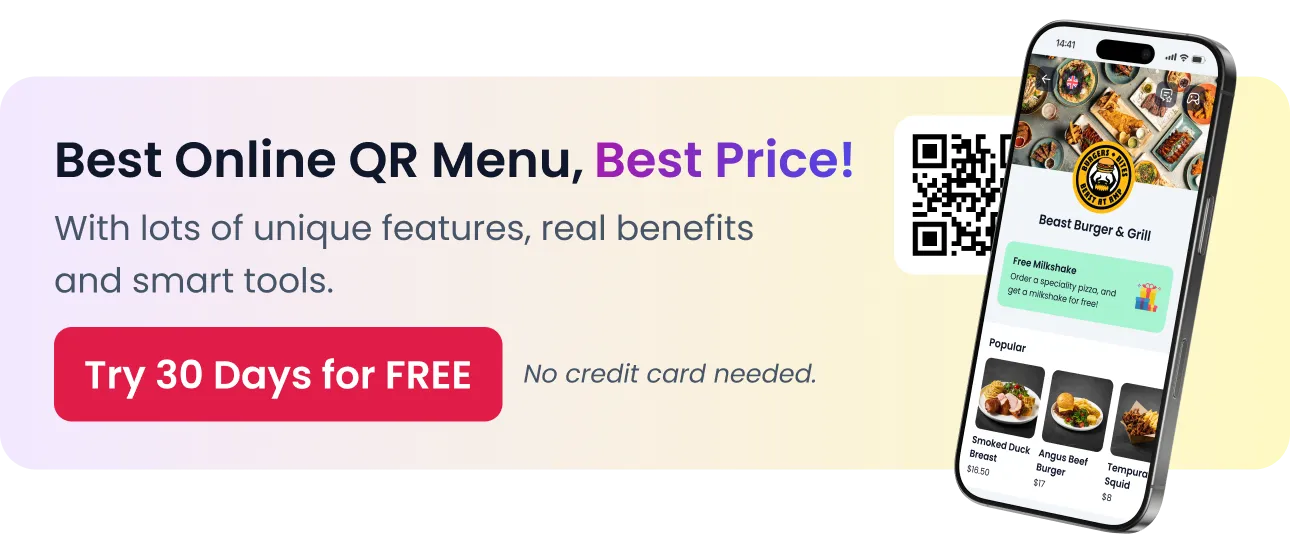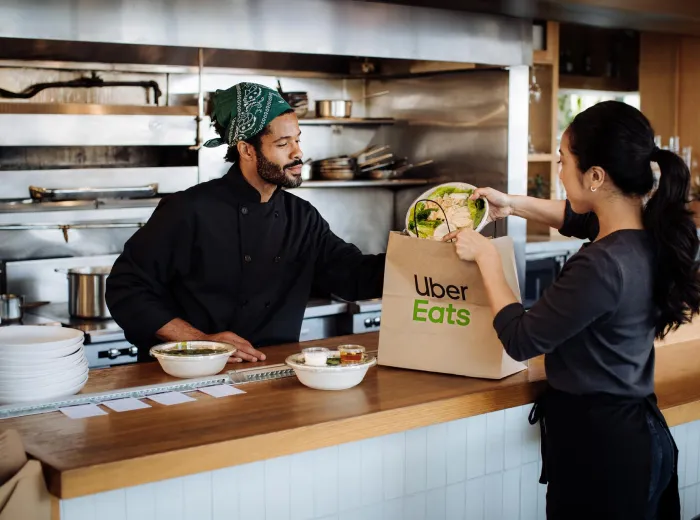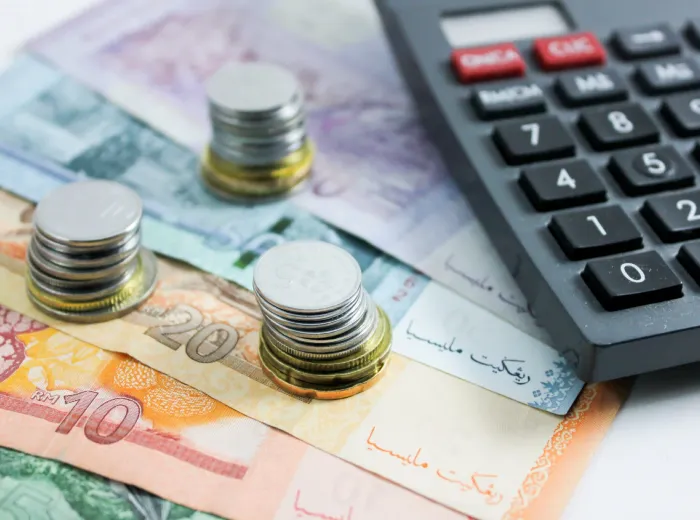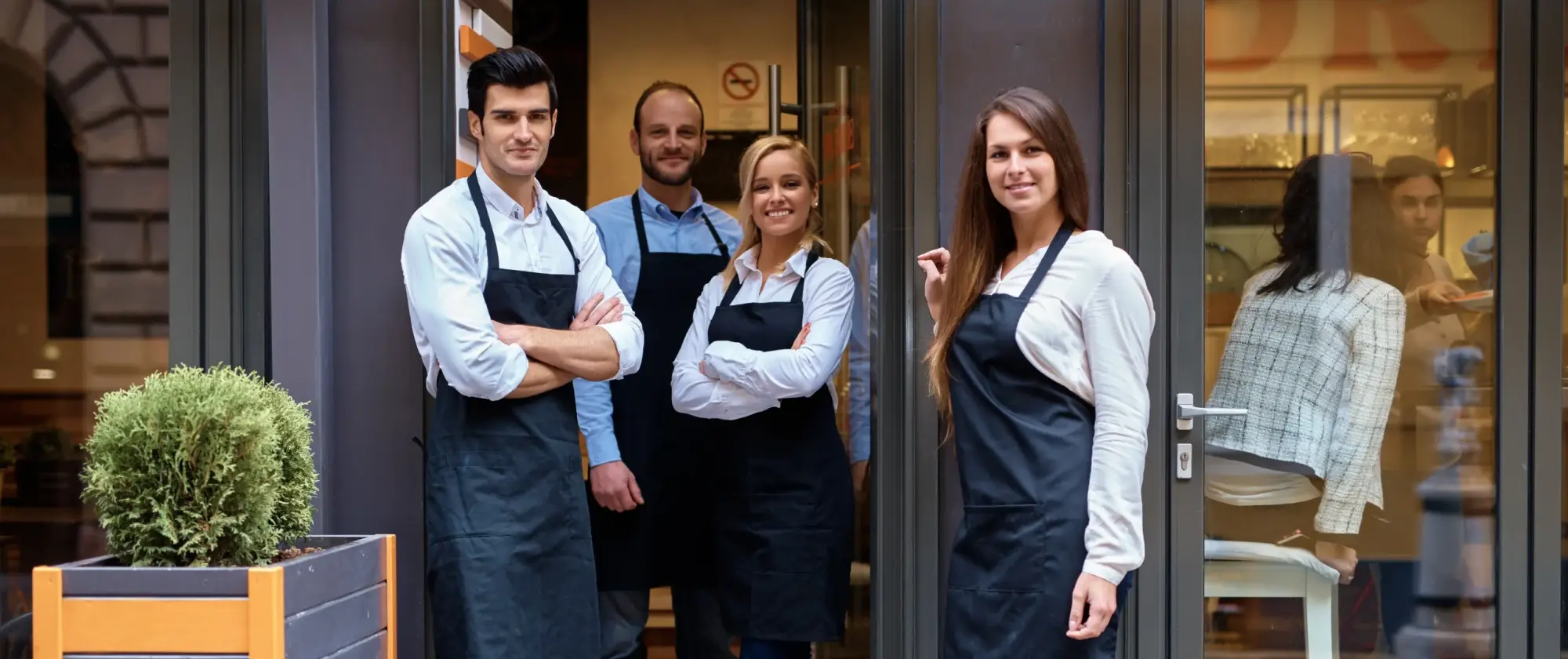
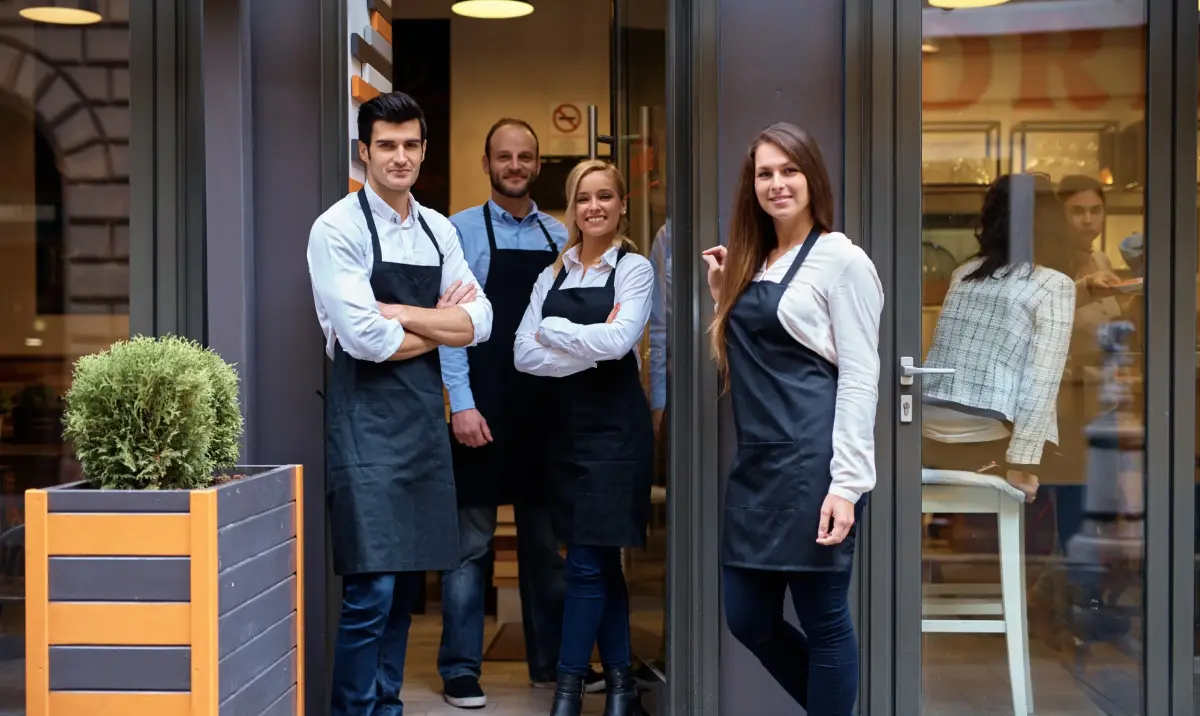
How to Train Waitstaff on Upselling in Restaurants?
Training waitstaff on upselling is a vital aspect of running a profitable and customer-centric restaurant. Not only does upselling enhance your bottom line, but it also elevates the dining experience by introducing guests to menu items they might not have considered. Whether it’s recommending a premium wine pairing, highlighting a chef’s special, or suggesting a decadent dessert, effective upselling requires skill, confidence, and knowledge.
The benefits of upselling go beyond increased revenue—it fosters stronger customer relationships. Diners feel cared for when staff genuinely suggest items tailored to their preferences, creating memorable experiences that drive loyalty. However, teaching the art of upselling demands a well-structured approach, combining product knowledge, communication skills, and practice.
This guide dives into every detail, from understanding why upselling matters to designing a results-driven training program. If you’re ready to boost your sales and empower your team, let’s get started!
Why Upselling is Critical for Restaurants
Upselling is more than a sales tactic—it’s a powerful strategy that drives revenue, enhances customer satisfaction, and sets your restaurant apart. When done thoughtfully, it turns an ordinary dining experience into something memorable while boosting your profit margins. Understanding why upselling is essential lays the foundation for training your waitstaff effectively.
The Financial Impact of Upselling
Upselling directly contributes to your restaurant’s profitability by:
- Increasing Average Check Size: Encouraging guests to add extras, like appetizers or premium drinks, raises the total bill.
- Boosting Profit Margins: High-margin items, such as desserts or specialty beverages, are excellent for upselling and add significant value to each transaction.
📌 Example: A server suggesting a $12 glass of wine instead of the $8 house option can significantly impact weekly sales when applied consistently.
Upselling is an effective tool to grow revenue without needing to expand your customer base. It’s a win-win for both business owners and diners.
Enhancing Customer Satisfaction Through Upselling
Well-trained waitstaff don’t just sell; they elevate the customer experience. Here’s how upselling achieves this:
- Personalized Recommendations: Offering tailored suggestions based on customer preferences shows attentiveness.
- Creating Memorable Experiences: Highlighting chef specials or unique dishes adds an exclusive touch to the meal.
- Anticipating Needs: Recommending items that enhance the meal (like a dessert pairing) can make dining more enjoyable.
📌 Example: A guest ordering a pasta dish might appreciate a suggestion for garlic bread or a glass of wine that complements the flavors.
When upselling feels genuine and aligned with guest preferences, it leaves a lasting impression and fosters loyalty.
Upselling vs. Cross-Selling: Key Differences
Understanding the distinction between upselling and cross-selling helps waitstaff apply the right approach:
- Upselling: Encouraging a higher-priced or premium version of the customer’s choice.
- Example: Suggesting a larger steak cut or a top-shelf cocktail.
- Cross-Selling: Promoting complementary items to the original choice.
- Example: Recommending a side dish with an entrée or dessert with coffee.
📌 Key Insight: While both techniques are valuable, upselling focuses on upgrading while cross-selling broadens the order. Training your staff on when and how to use these tactics is crucial for maximizing results.
Upselling and cross-selling work hand-in-hand to create an optimized dining experience and generate additional revenue. Ensuring your team masters both is key to long-term success.
Understanding the Basics of Upselling
Upselling is a fine balance between persuasive communication and genuine service. Before training your waitstaff, it’s crucial to understand the fundamental concepts, key strategies, and common pitfalls. Mastering these basics ensures your staff can upsell effectively without making guests feel pressured or uncomfortable.
What is Upselling?
Upselling is the practice of encouraging customers to upgrade or add on to their initial purchase to enhance their experience. Unlike aggressive sales tactics, upselling is about:
- Presenting Value: Highlighting the benefits of premium or additional options.
- Enhancing Guest Satisfaction: Offering suggestions that genuinely improve the dining experience.
- Building Trust: Tailoring recommendations to customer preferences.
📌 Example: Suggesting a premium cocktail instead of the standard drink or offering a larger portion size for a popular entrée.
Upselling done right is subtle, customer-focused, and enhances the overall meal rather than simply increasing the bill.
Examples of Effective Upselling in Restaurants
Upselling can take many forms, depending on the menu and customer preferences. Examples include:
- Beverages:
- Recommending a premium wine or craft cocktail.
- Suggesting a wine pairing with their meal.
- Appetizers and Sides:
- Promoting chef-recommended starters or sharing platters.
- Encouraging add-ons like a side salad or truffle fries.
- Main Courses:
- Offering protein upgrades (e.g., shrimp or steak instead of chicken).
- Suggesting premium sauces or garnishes.
- Desserts:
- Highlighting signature desserts or dessert pairings with coffee or liqueurs.
📌 Key Tip: Present options enthusiastically but without overwhelming the guest. Focus on enhancing their experience.
Common Mistakes in Upselling
Even the best intentions can backfire without the right approach. Some common mistakes to avoid include:
- Being Pushy: Overwhelming guests with multiple suggestions can feel intrusive.
- Ignoring Customer Cues: Not paying attention to verbal or non-verbal signals may lead to unnecessary suggestions.
- Lacking Product Knowledge: Recommending items without understanding their value can erode trust.
- Overemphasizing Price: Highlighting cost over benefits can make guests feel upselling is purely transactional.
📌 Example: Instead of saying, “Do you want the $50 bottle of wine?” try, “This wine is a customer favorite and pairs wonderfully with your dish.”
By avoiding these pitfalls and adopting a guest-centric approach, upselling becomes a natural extension of excellent service.
Preparing for Upselling Training
The foundation of successful upselling lies in preparation. Before conducting training sessions, restaurant owners and managers must focus on setting clear goals, selecting the right methods, and equipping staff with the tools they need to excel. A well-prepared training program not only boosts sales but also enhances team confidence and cohesion.
Setting Clear Upselling Goals
To ensure effective training, define specific and measurable goals for your upselling strategy. Examples include:
- Revenue Targets: Set realistic increases in average check size or monthly sales.
- Menu Focus: Prioritize upselling high-margin items like desserts, beverages, or seasonal specials.
- Customer Engagement: Aim to improve customer satisfaction scores by offering personalized recommendations.
📌 Example: “Increase appetizer sales by 15% over the next quarter” is a clear and actionable target for your team.
Clearly communicating these goals provides direction and motivation, ensuring everyone works toward a common objective.
Choosing the Right Training Method
Select a training approach that suits your team’s needs and learning styles. Popular methods include:
- Role-Playing Scenarios: Help staff practice upselling in real-life situations.
- Workshops and Group Sessions: Foster collaboration and discussion about upselling techniques.
- One-on-One Coaching: Provide personalized feedback and guidance to individual team members.
- On-the-Job Training: Allow staff to apply upselling skills during live service, with a supervisor providing real-time feedback.
📌 Tip: Combine multiple training methods for a comprehensive and engaging experience.
By tailoring training approaches to your team, you can ensure maximum participation and skill retention.
Identifying Key Menu Items to Upsell
Focus your training efforts on specific menu items that align with your restaurant’s revenue and customer experience goals. Categories to prioritize include:
- High-Margin Items:
- Specialty drinks, signature desserts, and premium entrées.
- Seasonal or Limited-Time Offers:
- Create urgency by emphasizing exclusivity.
- Chef Specials:
- Highlight unique dishes that reflect the restaurant’s brand.
- Add-Ons:
- Suggest accompaniments like sauces, sides, or beverage upgrades.
📌 Example: Train staff to say, “Would you like to add a side of truffle fries to your steak? They’re a guest favorite.”
Equipping staff with detailed knowledge of these items ensures they can confidently and authentically recommend them.
Understanding Customer Demographics
Upselling techniques should be adapted to your customer base. Key factors to consider include:
- Age Group:
- Younger customers may be drawn to trendy beverages or shareable dishes.
- Older diners may prefer classic pairings or premium upgrades.
- Dining Purpose:
- Special occasion diners might appreciate indulgent options, while casual visitors may prefer affordable add-ons.
- Cultural Preferences:
- Align suggestions with cultural tastes or dietary habits.
📌 Tip: Encourage staff to observe guest behavior and ask open-ended questions to gauge preferences.
By understanding your customer demographics, staff can make targeted, relevant suggestions that enhance the dining experience and increase sales.
Designing an Effective Training Program
An effective upselling training program equips waitstaff with the skills, confidence, and knowledge to boost sales while enhancing the guest experience. To achieve this, a well-structured plan must combine interactive learning, practical exercises, and actionable insights.
Role-Playing Exercises for Upselling
Role-playing is one of the most effective tools for training staff in upselling. It allows them to practice scenarios in a safe and controlled environment. Benefits include:
- Improved Confidence: Staff gain experience in making recommendations without fear of judgment.
- Realistic Scenarios: Replicating common dining situations prepares staff for live interactions.
- Constructive Feedback: Managers can provide immediate guidance on tone, phrasing, and delivery.
📌 Example Exercise: Pair team members and have one play the role of a customer while the other practices upselling items like beverages, appetizers, or desserts.
Incorporating regular role-playing sessions ensures staff are ready to upsell effectively in any situation.
Teaching Waitstaff to Read Customer Cues
Understanding customer behavior is essential for successful upselling. Train your team to identify verbal and non-verbal cues, such as:
- Body Language:
- Open posture or frequent eye contact may indicate interest.
- Crossed arms or checking the time may suggest reluctance.
- Tone of Voice:
- Enthusiastic responses signal openness to suggestions.
- Conversation Topics:
- Guests discussing celebrations or special occasions are more likely to indulge.
📌 Example: If a guest is curious about the wine list, this is an opportunity to suggest a premium pairing.
Teaching staff to observe and adapt to customer cues ensures their recommendations feel natural and personalized.
Using Storytelling to Highlight Menu Items
Storytelling transforms an ordinary menu item into an enticing choice. Train staff to craft compelling narratives by:
- Describing Origins: Share the story behind a dish or beverage.
- Example: “This dessert features locally sourced honey for a touch of sweetness.”
- Highlighting Unique Features: Emphasize what sets the item apart.
- Example: “Our house-made pasta is rolled fresh daily by our chef.”
- Creating Visual Appeal: Use descriptive language to paint a picture.
- Example: “This steak is perfectly seared and served with a rich, buttery sauce.”
📌 Key Tip: Encourage enthusiasm when telling stories—passion is contagious and persuasive.
Storytelling not only enhances upselling opportunities but also creates a memorable dining experience for guests.
Explaining the Psychology of Persuasion
Upselling is as much about psychology as it is about product knowledge. Incorporate the following persuasion techniques into your training:
- Scarcity: Highlight limited availability.
- Example: “This is one of our most popular dishes, and we only have a few left for tonight.”
- Social Proof: Mention guest favorites.
- Example: “Many of our regulars rave about this dessert pairing.”
- Authority: Use expert recommendations.
- Example: “Our chef recommends adding the truffle sauce to this dish for an elevated flavor.”
📌 Reminder: Train staff to apply these techniques subtly, ensuring they enhance the guest’s experience rather than appearing manipulative.
By combining psychology with practical training, you empower your team to upsell with confidence and authenticity.
Essential Techniques for Upselling
Upselling requires a mix of soft skills, product knowledge, and strategic communication. By mastering specific techniques, your waitstaff can increase sales while creating a positive dining experience for guests. These proven methods can be applied seamlessly to boost both revenue and customer satisfaction.
Using Positive Language to Suggest Add-Ons
Positive and confident language is key to effective upselling. Train your team to:
- Frame Suggestions as Enhancements: Highlight how the add-on improves the meal.
- Example: “Adding a side of garlic butter shrimp will make your steak even more delicious.”
- Avoid Negative Words: Instead of saying, “You don’t want dessert?” say, “Would you like to try our signature chocolate lava cake?”
- Be Enthusiastic and Genuine: Customers respond better to genuine excitement about the menu.
📌 Tip: Practice using phrases like “many of our guests love” or “pairs perfectly with” to make suggestions appealing.
Positive language not only makes suggestions more persuasive but also ensures guests feel valued rather than pressured.
The Power of Recommendations and Personalization
Guests are more likely to accept suggestions tailored to their preferences. Train staff to:
- Ask Open-Ended Questions:
- Example: “Do you prefer red or white wine with your meal?”
- Observe and Adapt:
- If a guest orders a pasta dish, suggest a wine or side that complements it.
- Use Personal Favorites:
- Share personal or popular recommendations. Example: “The crème brûlée is my favorite; it’s the perfect way to end a meal.”
📌 Reminder: Ensure staff focus on building rapport with guests to make recommendations feel natural.
Personalized upselling creates a more engaging and memorable experience, increasing the likelihood of repeat visits.
Creating a Sense of Urgency
Urgency is a powerful tool to encourage decision-making. Train your staff to create urgency by:
- Highlighting Limited-Time Offers:
- Example: “This seasonal dessert is only available this month.”
- Mentioning Availability:
- Example: “We only have a few portions of the special left today.”
- Promoting Daily Specials:
- Make specials sound exclusive to entice customers.
📌 Key Tip: Ensure urgency is conveyed genuinely—guests can spot insincerity and may feel manipulated.
When urgency is communicated effectively, it motivates customers to seize the opportunity, leading to increased sales.
Upselling Beverages and Desserts Effectively
Beverages and desserts are high-margin items that are ideal for upselling. Techniques to focus on include:
- Beverages:
- Suggest premium options. Example: “Would you like to upgrade to our reserve wine selection?”
- Pair drinks with meals. Example: “This cocktail complements the salmon beautifully.”
- Desserts:
- Use tempting descriptions. Example: “Our chocolate soufflé is rich and decadent, served warm with a scoop of vanilla ice cream.”
- Suggest sharing options for groups. Example: “Our dessert platter is perfect for sharing and includes a little bit of everything.”
📌 Quick Win: Encourage staff to mention beverages and desserts at the right moment, such as during the meal or when clearing plates.
Focusing on these high-margin categories ensures your team maximizes every opportunity to enhance the guest experience while increasing revenue.
Leveraging Technology to Support Upselling
Technology has revolutionized the restaurant industry, making upselling easier and more efficient. By integrating digital tools into your operations, you can provide your waitstaff with the support they need to deliver seamless upselling experiences. These tools not only enhance efficiency but also allow for data-driven recommendations tailored to your guests.
Utilizing Digital Menu Systems
Digital menus, whether on tablets or QR code-based platforms, are powerful tools for upselling. Their advantages include:
- Visual Appeal: High-quality images and detailed descriptions entice customers to order premium items.
- Highlighting Add-Ons: Automatically suggest upgrades, such as toppings, sides, or larger portion sizes.
- Promoting Limited-Time Offers: Showcase specials prominently to create interest.
- Customizable Recommendations: Adjust suggestions based on time of day, inventory, or seasonal items.
📌 Example: A digital menu can prompt guests, “Add a glass of wine to pair with your steak for just $10.”
Digital menus empower guests to explore options at their own pace while making upselling suggestions feel natural and unobtrusive.
Using POS Systems to Identify Upselling Opportunities
Modern POS (Point of Sale) systems can assist staff in identifying upselling opportunities by:
- Tracking Guest Preferences: For repeat customers, POS systems can store past orders, allowing staff to make personalized suggestions.
- Suggesting High-Margin Items: Highlight menu items that contribute the most to profitability.
- Real-Time Inventory Updates: Ensure that staff promote items that are in stock, avoiding disappointment.
- Integrating Staff Prompts: Provide reminders or scripts for upselling specific items during the order process.
📌 Example: A POS prompt might suggest, “Offer the guest a dessert pairing with their coffee order.”
POS systems streamline operations, ensuring staff can focus on engaging with customers while making data-informed upselling decisions.
Incorporating Mobile Ordering Platforms
Mobile ordering platforms offer another opportunity to drive upselling, especially for takeout and delivery. Features that support upselling include:
- Add-On Prompts: Suggest extras, such as sauces, drinks, or appetizers, before checkout.
- Dynamic Pricing Suggestions: Highlight upgrades at a small additional cost, such as a larger beverage or premium entrée.
- Bundled Offers: Encourage guests to purchase combo meals or family-sized portions.
- Personalized Recommendations: Use customer data to present items they are likely to enjoy.
📌 Example: During mobile checkout, a prompt might ask, “Would you like to add a side salad for $5?”
Mobile platforms make upselling an integral part of the ordering experience, increasing sales even when customers aren’t dining in.
Leveraging technology ensures that upselling becomes a seamless and integrated part of your restaurant’s operations. By combining digital tools with well-trained staff, you can maximize revenue and create a more dynamic dining experience for your guests.
Monitoring and Improving Upselling Performance
Upselling success doesn’t stop at training—it requires ongoing monitoring and optimization. By evaluating performance, providing feedback, and implementing incentive programs, restaurant managers can ensure continuous improvement and motivate staff to excel in upselling.
Setting KPIs for Upselling Success
Key Performance Indicators (KPIs) help measure the effectiveness of your upselling strategies. Common KPIs include:
- Average Check Size: Track the increase in the average spend per customer.
- Upsell Conversion Rate: Measure the percentage of guests who accept upselling suggestions.
- Revenue from High-Margin Items: Monitor sales of premium items like desserts, drinks, and add-ons.
- Customer Satisfaction Scores: Ensure that upselling efforts align with positive dining experiences.
📌 Example: If the average check size increases by 10% after training, your upselling strategy is yielding measurable results.
Tracking KPIs allows you to assess the program’s impact and identify areas for further development.
Regular Feedback and Performance Reviews
Consistent feedback helps staff refine their upselling techniques. Steps to implement effective reviews include:
- One-on-One Check-Ins: Provide individual feedback on strengths and areas for improvement.
- Shadowing Sessions: Observe staff during service to evaluate their upselling skills in real time.
- Customer Feedback: Use guest surveys or reviews to assess how upselling efforts are being received.
- Peer Assessments: Encourage team members to share insights and tips based on their experiences.
📌 Tip: Highlight specific examples of successful upselling interactions to reinforce positive behavior.
By fostering a culture of constructive feedback, you can ensure staff continually improve their upselling performance.
Incentives and Rewards for Outstanding Upselling
Motivate your staff to excel by offering incentives for achieving upselling goals. Popular options include:
- Monetary Bonuses: Reward employees who consistently hit revenue targets.
- Team Challenges: Create friendly competitions with rewards for top performers.
- Non-Monetary Rewards: Offer perks like gift cards, additional time off, or recognition during team meetings.
- Public Recognition: Celebrate upselling achievements through a “Server of the Month” program or a dedicated wall of fame.
📌 Example: Host a monthly contest where the server with the highest upselling conversion rate wins a prize.
Incentives encourage healthy competition, boosting team morale and reinforcing the importance of upselling.
By monitoring KPIs, providing regular feedback, and implementing rewards, you create a dynamic system that ensures your upselling strategy remains effective and evolves over time. Staff will feel supported and motivated to consistently deliver excellent results.
Common Challenges in Upselling and How to Overcome Them
Upselling can be a challenging skill for waitstaff to master, especially when faced with certain obstacles. Addressing these challenges head-on ensures your team is prepared to navigate them with confidence and professionalism.
Addressing Staff Resistance to Upselling
Some staff members may resist upselling due to discomfort or a fear of coming across as pushy. To overcome this:
- Emphasize the Benefits: Highlight how upselling enhances the guest experience and contributes to higher tips.
- Provide Comprehensive Training: Equip staff with the skills to upsell naturally and confidently.
- Foster a Positive Mindset: Encourage staff to see upselling as an act of service rather than a sales tactic.
📌 Example: During training, role-play scenarios to demonstrate how upselling can be framed as helpful advice rather than a sales pitch.
Addressing resistance through education and encouragement helps staff view upselling as an integral part of excellent service.
Handling Negative Customer Reactions
Some customers may react negatively to upselling if they perceive it as overly aggressive. To avoid this:
- Read Customer Cues: Train staff to assess whether a guest is open to suggestions or prefers a more hands-off approach.
- Keep It Subtle: Present recommendations as optional enhancements rather than hard sells.
- Example: “If you’re in the mood for something extra, our truffle fries pair wonderfully with your steak.”
- Apologize Gracefully: If a guest declines or reacts negatively, train staff to respond politely and move on.
📌 Reminder: Always prioritize the guest’s comfort over making a sale.
Teaching your team to remain adaptable and professional ensures negative reactions are handled tactfully, preserving the guest experience.
Maintaining Authenticity and Avoiding Pushiness
Guests appreciate genuine recommendations but may be turned off by overly rehearsed or insincere suggestions. To maintain authenticity:
- Encourage Personalization: Train staff to make recommendations based on guest preferences or menu knowledge.
- Focus on Value: Emphasize how an upsell enhances the meal rather than its cost.
- Example: “This wine brings out the flavors in your dish beautifully.”
- Rotate Suggestions: Avoid promoting the same items repeatedly, which can come across as scripted.
📌 Tip: Encourage staff to share their personal favorites to make suggestions feel authentic.
By striking a balance between enthusiasm and authenticity, your team can create upselling opportunities that feel natural and appreciated.
Upselling challenges are inevitable, but with proper training and support, your team can overcome them. By addressing resistance, handling customer reactions gracefully, and prioritizing authenticity, you ensure upselling enhances both revenue and the guest experience.
Creating a Culture of Upselling Excellence
Building a culture of upselling excellence goes beyond training—it requires ongoing leadership, support, and recognition. When upselling becomes part of your restaurant’s identity, your team will naturally embrace it as a core element of exceptional service.
Leadership’s Role in Encouraging Upselling
Leadership plays a critical role in establishing an upselling-focused culture. Here’s how:
- Lead by Example: Managers and senior staff should demonstrate upselling techniques during service.
- Provide Clear Expectations: Communicate the importance of upselling as part of staff responsibilities.
- Offer Continuous Support: Be available to answer questions, provide guidance, and encourage improvement.
- Celebrate Successes: Acknowledge team members who excel in upselling, reinforcing its value.
📌 Example: During team meetings, share stories of successful upselling interactions to inspire and motivate staff.
When leadership is actively involved, it creates a top-down commitment to upselling that resonates with the entire team.
Empowering Waitstaff with Product Knowledge
Knowledge is the foundation of effective upselling. Empower your staff by:
- Providing Regular Training: Schedule sessions to update the team on new menu items, seasonal specials, and ingredient details.
- Creating Reference Materials: Use cheat sheets or digital resources for quick access to pairing suggestions or item descriptions.
- Encouraging Tasting Sessions: Let staff experience dishes and drinks firsthand to better understand and describe them.
📌 Key Insight: Waitstaff who are confident in their knowledge can make personalized, informed recommendations that guests trust.
By investing in product knowledge, you ensure your team can upsell with authority and enthusiasm.
Celebrating Upselling Success Stories
Recognition and celebration help sustain a culture of upselling excellence. Effective ways to celebrate success include:
- Team Recognition: Highlight top performers during team meetings or on a “Wall of Fame.”
- Incentive Programs: Reward consistent upselling achievements with bonuses, gift cards, or prizes.
- Sharing Guest Feedback: When guests praise a server’s recommendations, share their comments to motivate the team.
- Tracking Progress: Use upselling metrics to show how individual and team efforts contribute to the restaurant’s success.
📌 Example: Host a monthly “Upselling Champion” award to recognize outstanding staff contributions.
Celebrating achievements fosters a positive and motivating environment, encouraging staff to continue excelling in upselling.
Creating a culture of upselling excellence transforms it from a sales tactic into a seamless part of your restaurant’s service. With strong leadership, well-informed staff, and regular recognition, upselling becomes second nature, driving both revenue and guest satisfaction.
Frequently Asked Questions About Upselling Training
Upselling training often comes with questions from restaurant owners and staff about its implementation and effectiveness. Addressing these common concerns ensures clarity and encourages commitment to the process.
How Long Does It Take to Train Waitstaff?
The duration of upselling training depends on your team’s experience and the complexity of your menu. A typical timeline includes:
- Initial Training: 1–2 dedicated sessions (2–3 hours each) to cover the basics of upselling and role-playing scenarios.
- On-the-Job Practice: 2–4 weeks for staff to apply their skills during service, with ongoing feedback from managers.
- Continuous Improvement: Monthly refresher sessions or workshops to refine techniques and introduce new strategies.
📌 Tip: Combine classroom-style learning with real-world practice to ensure staff retain and apply what they learn.
While training takes time, the long-term benefits of skilled upselling make the investment worthwhile.
Can Upselling Work in Fine Dining Restaurants?
Absolutely. Upselling in fine dining settings can elevate the guest experience by focusing on premium, personalized recommendations. Strategies include:
- Highlighting Premium Ingredients: Suggest dishes that feature truffle, caviar, or other luxury elements.
- Promoting Pairings: Recommend wine or cocktail pairings tailored to the guest’s entrée selection.
- Offering Unique Experiences: Suggest tasting menus or chef’s special creations for a more curated dining experience.
📌 Example: A fine dining server might say, “Our sommelier recommends this vintage wine to perfectly complement your filet mignon.”
Upselling in fine dining is about sophistication and customization, aligning with the expectations of high-end diners.
What’s the Best Way to Measure Upselling Success?
Measuring upselling success involves tracking key metrics and gathering qualitative feedback. Effective methods include:
- Average Check Size: Monitor increases in per-customer spending after training.
- Sales of High-Margin Items: Track the performance of beverages, appetizers, and desserts.
- Upselling Conversion Rate: Calculate the percentage of successful upsell attempts compared to total interactions.
- Guest Feedback: Use surveys or review platforms to gauge how upselling efforts impact customer satisfaction.
📌 Example: A server increasing the sales of premium cocktails by 20% after training demonstrates measurable success.
By evaluating both quantitative and qualitative data, you can assess the effectiveness of your upselling program and make informed adjustments.
What Are the Most Common Upselling Mistakes to Avoid?
Even trained staff can encounter pitfalls when upselling. Common mistakes include:
- Overloading Guests with Options: Offering too many choices can overwhelm customers.
- Forgetting to Read Cues: Missing non-verbal or verbal signs of disinterest can lead to discomfort.
- Appearing Insincere: Recommendations that feel rehearsed or forced reduce credibility.
📌 Tip: Encourage staff to focus on one or two well-tailored suggestions instead of bombarding guests with options.
Avoiding these mistakes ensures upselling efforts remain guest-centered and effective.
Answering these frequently asked questions provides clarity on upselling training, helping restaurant owners and staff feel confident in implementing and sustaining successful programs.
Key Takeaways
Upselling is a critical skill that can transform your restaurant’s revenue and guest satisfaction when implemented effectively. Here are the key points to remember:
- Upselling Enhances Revenue and Guest Experience: Thoughtful suggestions of premium or complementary items can elevate the dining experience while increasing average check sizes.
- Training is Essential: A well-structured training program, including role-playing, personalized feedback, and product knowledge, equips staff to upsell confidently and authentically.
- Customer-Centric Approach is Key: Observing customer cues, making personalized recommendations, and avoiding pushiness ensure upselling feels natural and valued.
- Technology Boosts Upselling Efforts: Digital menus, POS systems, and mobile ordering platforms simplify upselling and provide actionable insights for staff.
- Monitor and Reward Performance: Tracking metrics like average check size and offering incentives motivates staff and fosters a culture of upselling excellence.
- Address Challenges Proactively: Overcome resistance, avoid common mistakes, and ensure upselling aligns with your restaurant’s unique identity and customer base.
By embedding upselling into your restaurant’s culture and providing ongoing support, you can create a win-win scenario where your team thrives, guests enjoy enhanced experiences, and your business achieves greater profitability.
Frequently Asked Questions on Waitstaff Upselling
Here are the most common questions restaurateurs and managers ask about training waitstaff to upsell effectively—designed to guide your team toward boosting sales and delighting customers, without ever feeling pushy. Discover actionable insights that elevate both revenue and guest experience.
What are the key components of effective upselling training for waitstaff?
The most successful training programs pair deep product knowledge with communication skills and hands-on practice. Ensure your team knows menu details, high-margin items, and ideal pairings, and give them role-playing scenarios to build confidence and delivery finesse.
How long does it take to effectively train waitstaff on upselling techniques?
A structured upselling training typically includes 1–2 sessions of 2–3 hours each, followed by 2–4 weeks of real-world application and manager feedback. Monthly refreshers help keep techniques sharp and adapt to new menu items.
What techniques can help servers upsell without sounding pushy?
Key techniques include descriptive, sensory-driven language, suggesting high-margin add-ons or pairings, creating a sense of occasion (like seasonal specials), and timing suggestions when guests are engaged—all delivered as helpful suggestions rather than sales pitches.
How can technology support upselling efforts in restaurants?
Leverage POS systems to prompt upsell suggestions and track performance, use digital menus or QR codes to highlight premium options and seasonal items, and deliver push notifications or interactive pairing ideas via mobile apps.
What incentives or metrics should restaurants use to measure upselling success?
Track KPIs like average check size, conversion rates of upsell attempts, and revenue generated from upsells. Pair these metrics with staff incentives—such as recognition or rewards—and reinforcement tools like refresher workshops or gamified competitions.
ABOUT THE AUTHOR
Erkin Coban
Your Customers Deserve The Best
And we got Menuviel for them.
The fastest and easy-to-use online QR menu with 12+ unique features. Choose Menuviel and elevate your service quality to the next level.
Use free for the first 30 days.
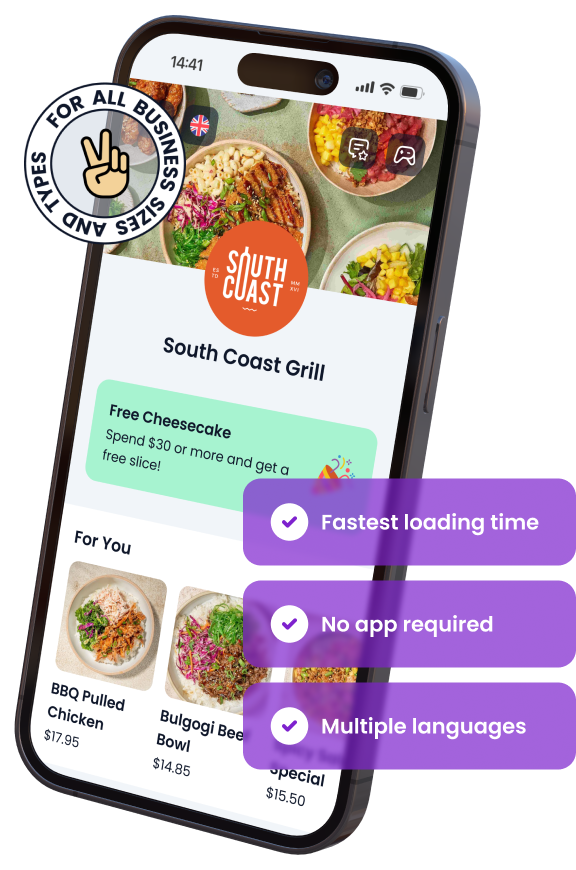
In This Article

Free AI Tools for Restaurants
TRY NOW ➜
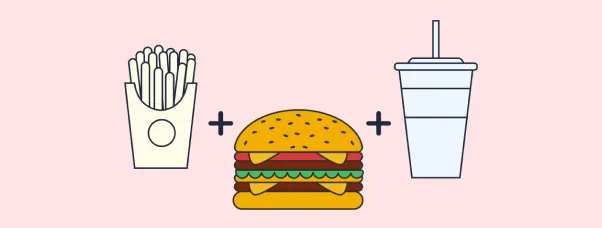
Add custom options to your menu items
Let customers choose sizes, add-ons, or extras with easy-to-set modifiers under each item.


